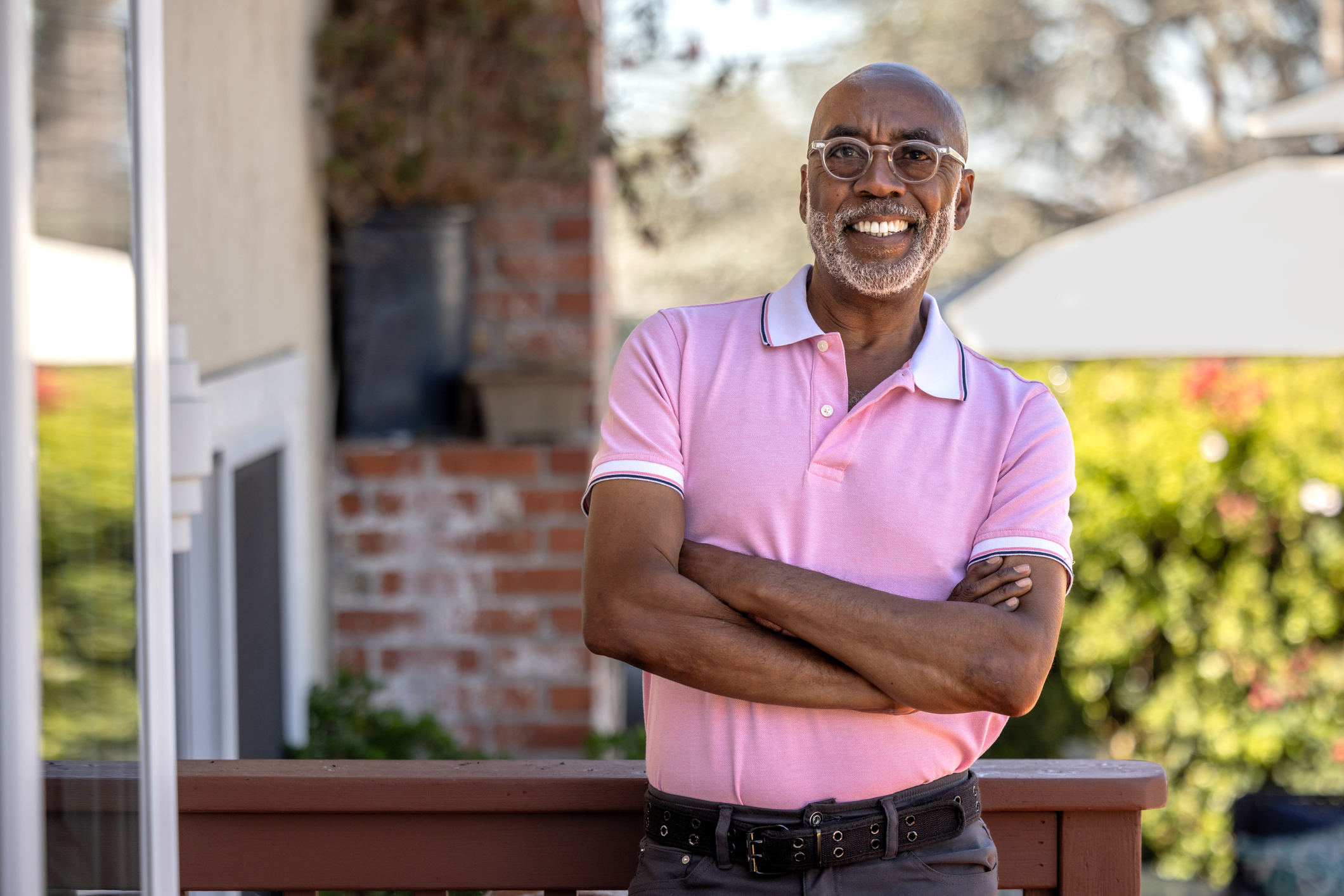The 'Die With Zero' Rule of Retirement
If spending makes you nervous, the 'Die With Zero' rule might be for you. Because you don’t want to be the richest person in the graveyard.


Over the next two decades, an estimated $90 trillion will pass from older generations to heirs in what’s been called the “Great Wealth Transfer.” It's a huge shift for those who follow estate and retirement planning trends. But if you ask hedge fund manager and best-selling author Bill Perkins, what’s really being transferred isn’t just money — it’s trillions in unlived experiences.
In his book Die With Zero: Getting All You Can from Your Money and Your Life, Perkins argues that life is better spent maximizing experiences rather than maximizing wealth. After all, wealth is only valuable if you actually use it.
As Perkins puts it: “[Y]ou need money to survive in retirement, but the main thing you’ll be retiring on will be your memories — so make sure you invest enough in those.”

Sign up for Kiplinger’s Free E-Newsletters
Profit and prosper with the best of expert advice on investing, taxes, retirement, personal finance and more - straight to your e-mail.
Profit and prosper with the best of expert advice - straight to your e-mail.
The book’s popularity has motivated many people to rethink their approach to retirement, embracing what we might call the “Die with Zero” rule. The goal is to live a fulfilling life within the limited time we have.
But is this philosophy truly practical, or is it more idealistic than realistic? More fiction than fact?
What is the "Die With Zero" rule?
News coverage often highlights the alarming shortfall in retirement savings. It’s true, many Americans aren’t saving enough. According to a 2025 Gallup poll, only half of nonretirees with a retirement savings plan expect to live comfortably in retirement.
Moreover, with rising inflation and longer lifespans, some financial experts question whether the traditional guideline of stashing away 80% of your income is still sufficient.
Perkins, however, sees another issue, one that gets far less attention: people hoarding wealth at the expense of living their best lives.
In fact, a recent study found that many retirees hesitate to spend their savings, preferring the security of untouched nest eggs. They tend to be more comfortable spending Social Security and pension income than withdrawing from their retirement accounts. For example, households with married 65-year-olds withdrew an average of just 2.1% of their savings annually — far below standard withdrawal recommendations.
Financial advisers frequently see this hesitation firsthand. Loren Sherman, founder of Integrity Wealth Management, says, “As retirement approaches, people should ask themselves: ‘What is all this for?’ Many struggle to shift from saving mode to actually enjoying the fruits of their labor while not getting attached to seeing a number continually increase.”
Perkins believes this mindset leads people to miss out on life. Instead of accumulating memories, they just accumulate money until it’s too late to enjoy it.
Featured Sponsor: Raisin
Maximize your retirement savings with these high-interest savings accounts. No fees — and start today with as low as $1. Read More.
The “Die with Zero” rule encourages a different approach: Spend your money intentionally — whether it’s on yourself, your loved ones or charity — while you’re alive to maximize life experiences. The logic is simple. If you die with money left over, it essentially represents potentially years you spent working for free, as it’s wealth you never got to use.
That said, the goal isn’t to hit zero too soon and end up in financial distress. As Ryan Theisen, financial advisor at Advance Capital Management, cautions, “Retirees need to keep in mind that the money they saved while working is meant to last them a lifetime, so it’s important to be responsible with your spending.”
Instead, the “Die with Zero” rule focuses on making sure that, by the end of your life, you’ve made full use of the money you spent so much valuable time and energy to earn.
How to follow the "Die With Zero" strategy
The Die With Zero rule involves timing your spending wisely by balancing health, money and time — each abundant at different life stages.
When you're young, you have time and health but little money; in middle age, you have money and health but less free time; in later years, you have time and money but declining health. The key is to spend strategically. For instance, prioritizing physically demanding experiences when young and using money to “buy time” in middle age, such as outsourcing chores to free up leisure hours.
Sherman advises, “Spending along the way requires balance and flexibility. Find what truly brings you joy so you’re getting maximum value out of each dollar.”
For example, a major part of the “Die with Zero” philosophy is giving while living. Perkins notes that adult children often need financial help in their 20s — when buying a first home or starting families — not when they inherit wealth decades later. Similarly, donating to charity during your lifetime allows you to see the impact of your giving rather than leaving it in your will.
In fact, Fidelity reports a 25% increase in donor-advised fund grants in 2024, suggesting retirees are finding value in giving now, not later.
One tool Perkins suggests is time bucketing: dividing your life into five-to ten-year intervals and setting experience goals for each stage. This helps you prioritize meaningful activities while still being able to enjoy them.
Sherman says, “It starts by having a real intentional conversation about what brings you joy and aligning money with what matters most.”
Does the "Die With Zero" rule change later in life?
Much of Die With Zero focuses on spending earlier — in your 30s, 40s and 50s — when health and time are on your side. But what about people already in their 70s or 80s?
For them, the rule doesn’t disappear — it just shifts.
At that stage, the regrets people carry tend to be about time, not money. Yet many retirees still hold on to an accumulation mindset. A BlackRock survey found that five years into retirement, fewer than one in five retirees had set any goals for how much they wanted to have at the end of life. Among those who did, more than half aimed to grow their assets, with little to no planning around systematically spending them down.
Rather than chase big-ticket adventures, spending with intention later in life might mean funding a family reunion, gifting to grandchildren, or making daily life more comfortable and meaningful — whether that’s support at home, continuing education or finally picking up the guitar.
As Perkins writes, “In the end, it’s not what you had that matters. It’s what you did.”
The risks and criticism of "Die With Zero"
Despite its appeal, the “Die with Zero” rule faces criticism.
For one, it doesn’t account for those struggling just to retire at all. Consider that one survey reported that U.S. households had an estimated median retirement savings of $64,000, yet Americans think they need $1.26 million in savings to retire comfortably.
Longevity risk — the possibility of outliving savings — is another concern. Medical emergencies, disability or unexpected expenses can derail even the best-laid plans. As Theisen notes, “The last thing anyone wants is to outlive their money. It’s a tightrope walk, especially if unforeseen expenses arise.”
In the book, Perkins suggests annuities as one way to mitigate this risk by providing guaranteed income for life. However, their complexity, costs and restrictions seem to conflict with the “Die with Zero” emphasis on financial flexibility and using wealth for life experiences.
Overspending can also be a potential pitfall. Sherman warns that withdrawing too much too soon means missing out on additional compounding. A spend-heavy mindset can leave retirees vulnerable if their financial situation takes a turn for the worse.
So, is the “Die with Zero” rule good advice? It largely depends on your circumstances, but for everyone, there are varying degrees to which it can be applied in retirement.
Should you follow the "Die With Zero" rule?
Perkins acknowledges that “Die with Zero” isn’t optimal for everyone. It’s best for those who have already built substantial savings and tend to be overly frugal despite having more than enough.
Therefore, for most people, following the rule exactly may be unrealistic. But adopting aspects of it — like spending more on experiences, gifting money earlier and breaking free from unnecessary frugality — could help lead to a more fulfilling retirement.
Psychology plays a big role. Behavioral science shows that people tend to feel the pain of losses more intensely than the joy of equivalent gains, a bias that makes shifting from saving to spending difficult. An objective opinion can help counter this mindset. Perkins writes of the benefit of working with a financial adviser, a point echoed by Theisen: "An advisor can help create a game plan that allows individuals to maximize spending while maintaining a healthy savings for a rainy day.”
The old saying goes, “You don’t want to be the richest person in the graveyard.” Sure, it’s normal to fear outliving your money — but fearing not living at all might be the greater risk. The fact is, we’re all going to die someday. We might as well enjoy the ride while we can.
Want more guidance on retirement savings? Sign up for Kiplinger's six-week series, Invest for Retirement.
Read More Retirement Rules
- The 8-Year Rule of Social Security
- The 'First Year of Retirement' Rule
- The Rule of 240 Paychecks in Retirement
- The Rule of 1,000 Hours in Retirement
- The 'Second Law' of Retirement Rules
- The Rule of Four Futures
- The Rule of $1,000: Is This Retirement Rule Right for You?
- The Rule of 55: One Way to Fund Early Retirement
- The 80% Rule of Retirement: Should This Rule be Retired?
- The 4% Rule for Retirement Withdrawals Gets a Closer Look
- The Rule of 25 for Retirement Planning: How Much Do You Need to Save?
Profit and prosper with the best of Kiplinger's advice on investing, taxes, retirement, personal finance and much more. Delivered daily. Enter your email in the box and click Sign Me Up.

Jacob Schroeder is a financial writer covering topics related to personal finance and retirement. Over the course of a decade in the financial services industry, he has written materials to educate people on saving, investing and life in retirement. With the love of telling a good story, his work has appeared in publications including Yahoo Finance, Wealth Management magazine, The Detroit News and, as a short-story writer, various literary journals. He is also the creator of the finance newsletter The Root of All (https://rootofall.substack.com/), exploring how money shapes the world around us. Drawing from research and personal experiences, he relates lessons that readers can apply to make more informed financial decisions and live happier lives.
-
 Callable CDs Have High Rates. We Still Don't Recommend You Get Them
Callable CDs Have High Rates. We Still Don't Recommend You Get ThemInvestors must carefully consider the trade-offs, as falling interest rates could lead to reinvestment at a lower yield and make selling on the secondary market difficult.
-
 High Mortgage Rates Are Holding My Retirement Hostage: Can I Still Downsize and Retire?
High Mortgage Rates Are Holding My Retirement Hostage: Can I Still Downsize and Retire?We ask retirement wealth advisers what to do.
-
 High Mortgage Rates Are Holding My Retirement Hostage: Can I Still Downsize and Retire?
High Mortgage Rates Are Holding My Retirement Hostage: Can I Still Downsize and Retire?We ask retirement wealth advisers what to do.
-
 Five Big Beautiful Bill Changes and How Wealthy Retirees Can Benefit
Five Big Beautiful Bill Changes and How Wealthy Retirees Can BenefitHere's how wealthy retirees can plan for the changes in the new tax legislation, including what it means for tax rates, the SALT cap, charitable giving, estate taxes and other deductions and credits.
-
 I Want to Buy an Annuity, but I'm Scared I'll Get Ripped Off. Should I Get One Anyway?
I Want to Buy an Annuity, but I'm Scared I'll Get Ripped Off. Should I Get One Anyway?An annuity is a way to achieve lifetime income in retirement, but you need to understand how this product works before making a purchase.
-
 Can AI Help With Your Finances?
Can AI Help With Your Finances?ChatGPT and other artificial-intelligence tools will streamline certain tasks, but don't count on them to get everything right.
-
 I'm a Financial Planner: Here Are Five Smart Moves for DIY Investors
I'm a Financial Planner: Here Are Five Smart Moves for DIY InvestorsYou'll go further as a DIY investor with a solid game plan. Here are five tips to help you put together a strategy you can rely on over the years to come.
-
 'Drivers License': A Wealth Strategist Helps Gen Z Hit the Road
'Drivers License': A Wealth Strategist Helps Gen Z Hit the RoadFrom student loan debt to a changing job market, this generation has some potholes to navigate. But with those challenges come opportunities.
-
 2026 Social Security COLA: The Little Known Data Shift That Could Impact Millions of Retirees' Benefits
2026 Social Security COLA: The Little Known Data Shift That Could Impact Millions of Retirees' BenefitsThe BLS has changed how it measures the inflationary data that determines whether Social Security benefits will get a Cost-of-Living Adjustment (COLA). Will it hurt your benefits?
-
 Financial Pros Provide a Beginner's Guide to Building Wealth in 10 Years
Financial Pros Provide a Beginner's Guide to Building Wealth in 10 YearsBuilding wealth over 10 years requires understanding your current financial situation, budgeting effectively, eliminating high-interest debt and increasing both your income and financial literacy.